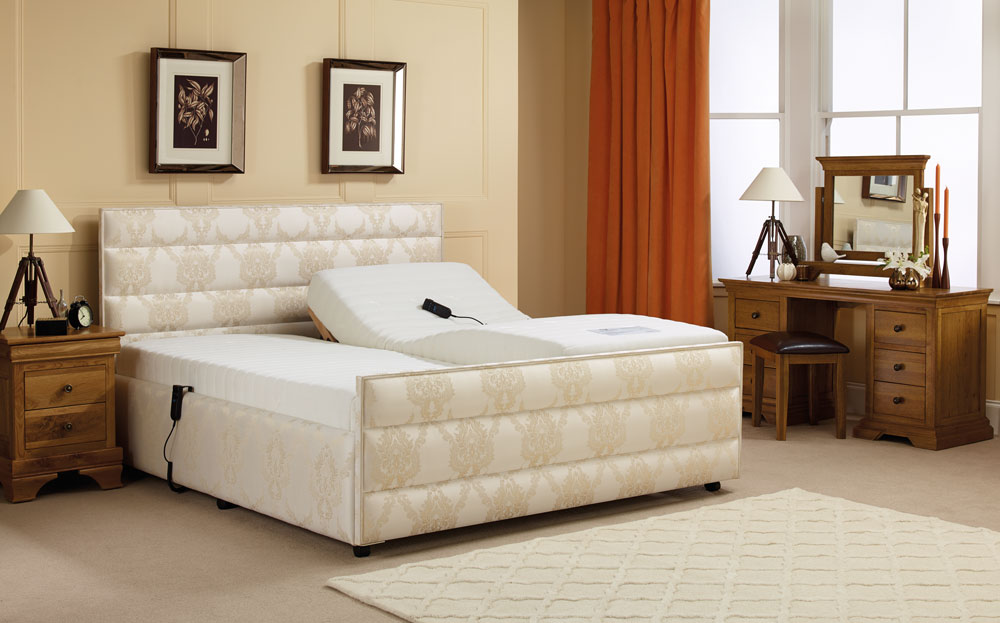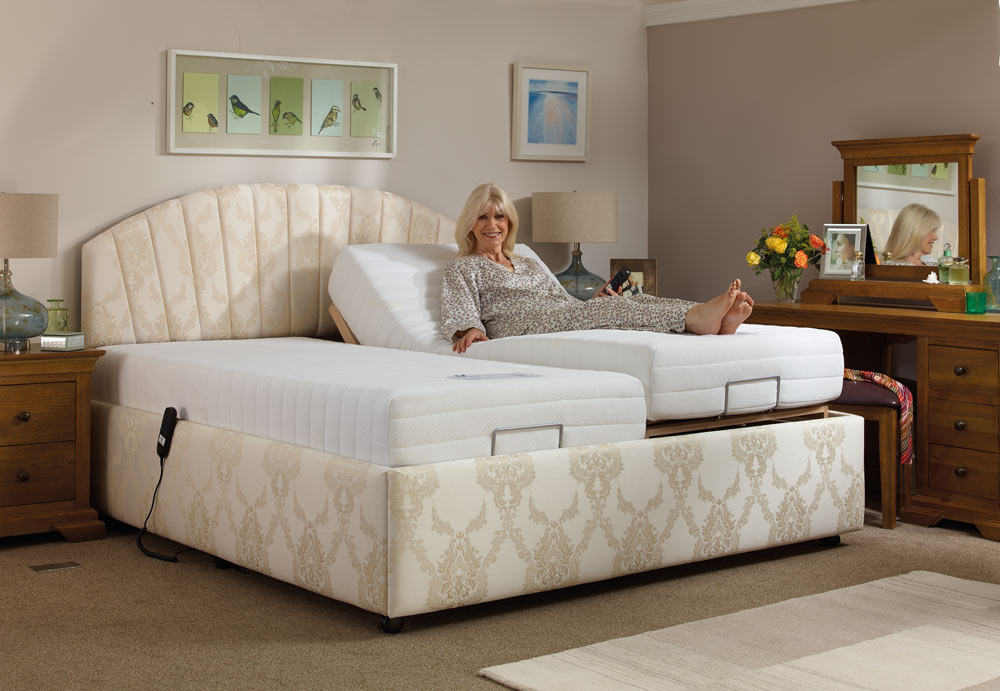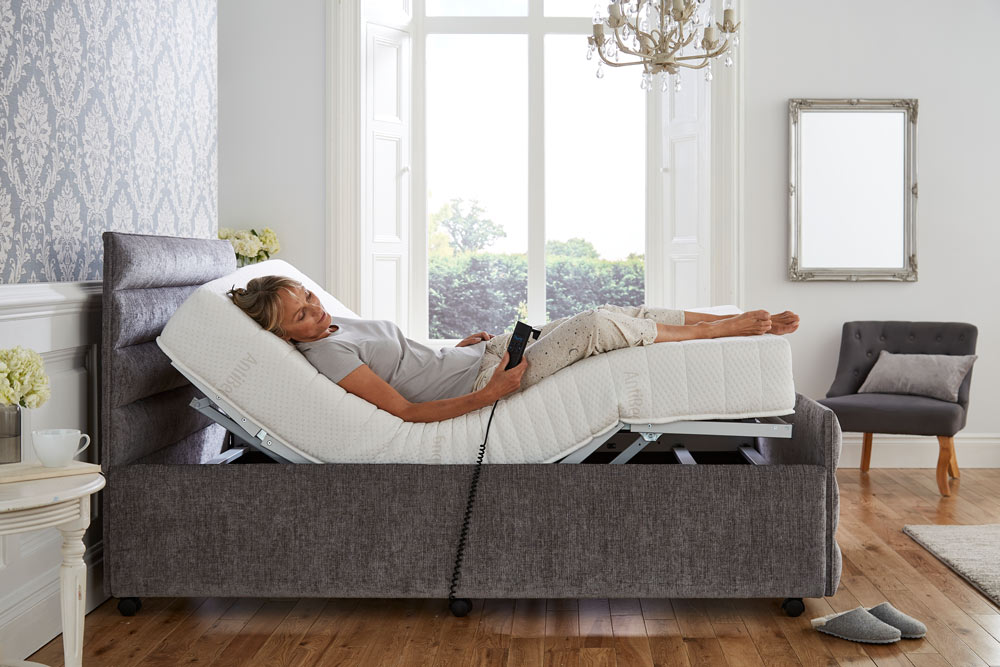Happy National Bed month! March is national bed month, a month dedicated to thinking about all things sleep.
According to The Sleep Council 1 in 10 people find an uncomfortable bed disturbs their sleep and 12% of people acknowledge that a new bed would help them sleep better. The Sleep Council have found that replacing an uncomfortable bed is associated with an extra 42 minutes of sleep. This is 42 winks that should not be missed!
You might not realise that your mattress is causing you discomfort and affecting your sleep because the degrading of a mattress is gradual. So here are a few questions to ask yourself to help you determine if you need a new bed or not.
Things to look out for…

- Do you wake up stiff in the mornings? This can indicate that your mattress might not be providing the proper support you need while you sleep.
- Do you feel tired throughout the day? If your mattress is uncomfortable it will be interrupting your circadian rhythm. This is the natural 24-hour internal clock your body goes through. It’s is triggered by temperature and sunlight. When you sleep you are not unconscious for the whole night, your consciousness dips and rises from deep sleep to mild wakefulness. If this cycle is disturbed by your uncomfortable mattress you won’t get the right combination of deep sleep and light sleep and leave you feeling tired.
- Do you sleep better in a hotel bed? You might not notice your mattress is causing you discomfort because you’re used to the feeling when you sleep. But if you sleep well in a different bed, it might be time to get a more comfortable bed.
- Has your weight dramatically changed recently? If your weight has changed dramatically recently your bed might not be providing the support you had previously. Different weights require different mattresses.
- Is your mattress showing wear and tear? If you can see a visible dip in the middle of your mattress or sagging, your springs have collapsed and are no longer providing you with the support you need. If you can feel the springs through the pocket spring mattress this means they have been displaced due to overuse or pressure damage.
- Is your mattress noisy? If you can hear creaking, groaning and pinging, the springs are most likely damaged. The sound is created by displaced springs and the springs rolling together. This could be keeping you from having a restful sleep.
- Can you feel your partner moving around? If your mattress is old its ability to reduce motion transfer diminishes. This could be reducing your quality of sleep.
- Are you suffering from an allergic reaction? Older mattresses collect more allergens, dead skin cells, dust mites and bed bugs, especially if it is not cleaned regularly. This will affect the quality of your sleep.
- Is your spine aligned while you’re sleeping? Your mattress should support your spine so it is aligned. If your mattress is old and drooping it will not support your back as it should causing disturbed sleep.
- Are you tossing and turning? This could be a sign your mattress is no longer comfortable.
- Would you be ashamed if someone else saw or had to sleep on your bed? This is a good indicator that it’s time to get a new mattress.
- Is your mattress around 7-10 years old? The Sleep Council recommends you should replace your mattress every 8 years, depending on the type of mattress you have. Memory foam mattress tend to last a lot longer than pocket sprung mattress
How can I make my mattress last longer?

- There are ways of making your mattress last that extra bit longer. We’ve put together a list of tips to help you look after and care for your mattress.
- Adding a mattress protector will make an extra barrier against spills, dust mites and debris that build up in a mattress. Keeping a mattress clean and hygienic will extend its life.
- Your mattress needs to be properly supported. This means you should purchase a good bed base. Whether it’s slatted or a divan it should be a similar age to the mattress to support it properly.
- Don’t forget to rotate your mattress every 3-6 months and if it can be flipped, do so every 6-12 months. This will prevent the mattress sagging in one place.
- To prevent your mattress from moulding put baking soda on it and leave it to soak up the moisture. Then hoover the baking soda up.
- Make sure to regularly open your window and air your mattress with the sheets off.
- Keep your mattress upright when you move it to prevent spring damage and be careful not to bend it.
- Keep your pets off your bed. This will prevent unwanted fraying, scratch marks and a build-up of pet hair.
- Don’t let children jump on your mattress, it will damage and displace the springs.
Ever thought of an adjustable mattress?
If you’re at the point where you think you need a new mattress, you might like to explore the option of an adjustable bed as an alternative option.
If you struggle to get in and out of bed, suffer from circulation, respiratory or joint problems an adjustable bed can offer a solution. At the touch of a button, an adjustable bed will put you into the perfect sleeping position that will support all your joints, aid blood circulation and open up your airways giving you the best sleep you ever had.
To browse our ranges request a free colour brochure, simply click “Request your FREE Colour Brochure” on this page.








